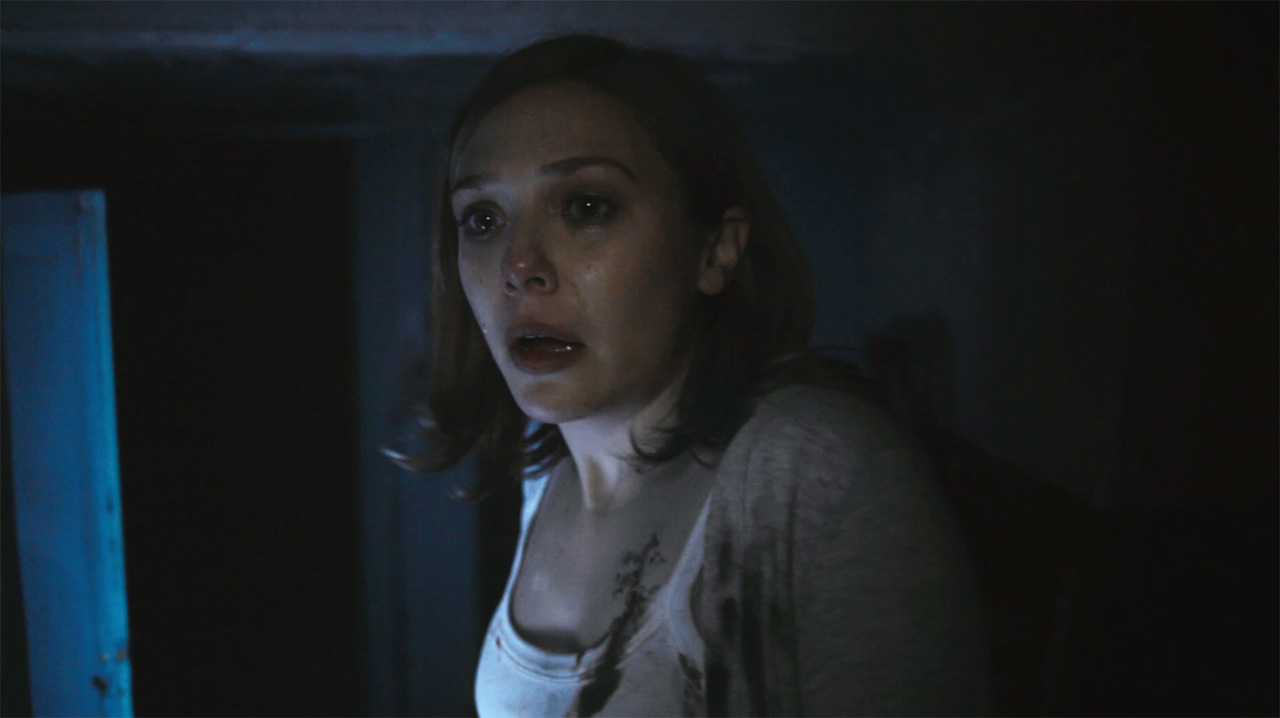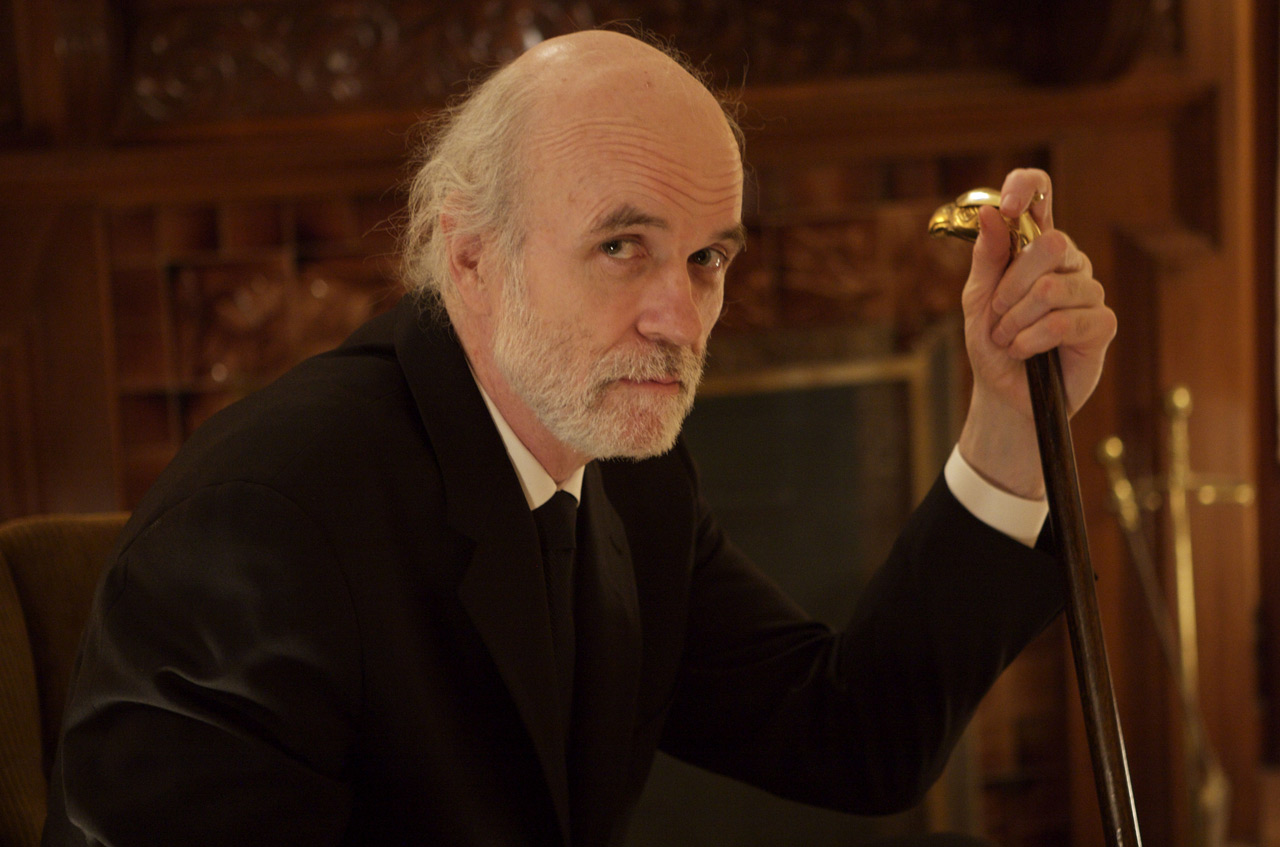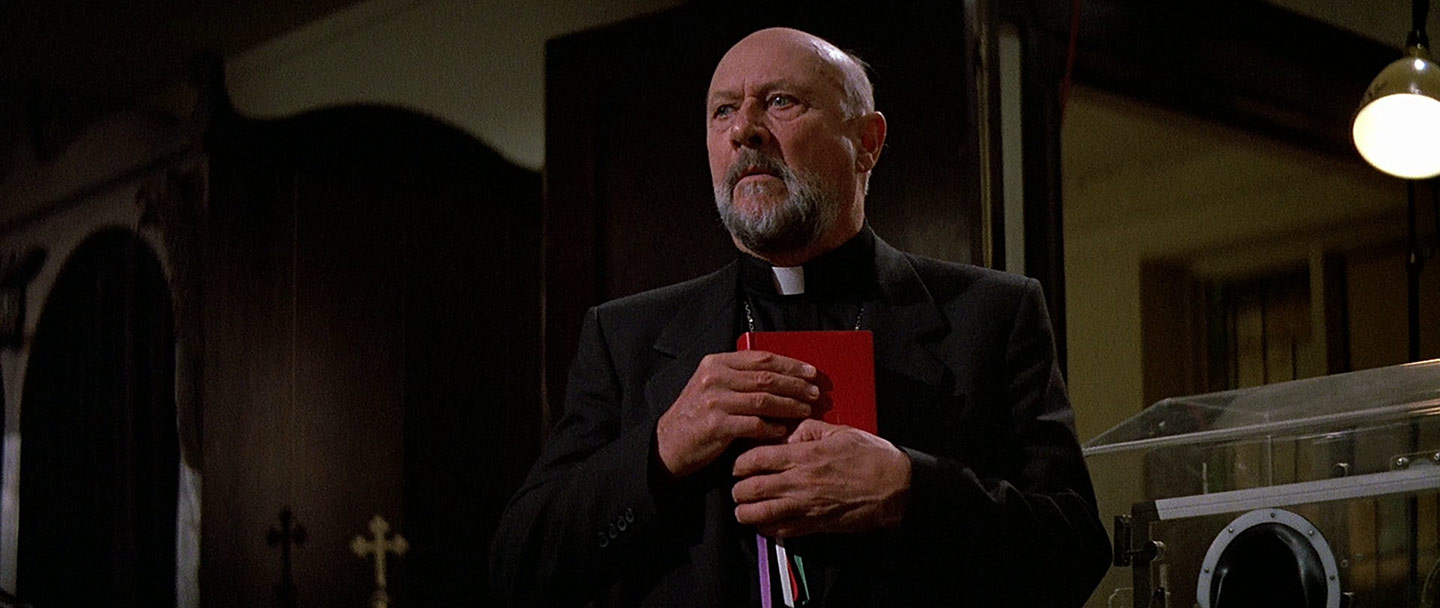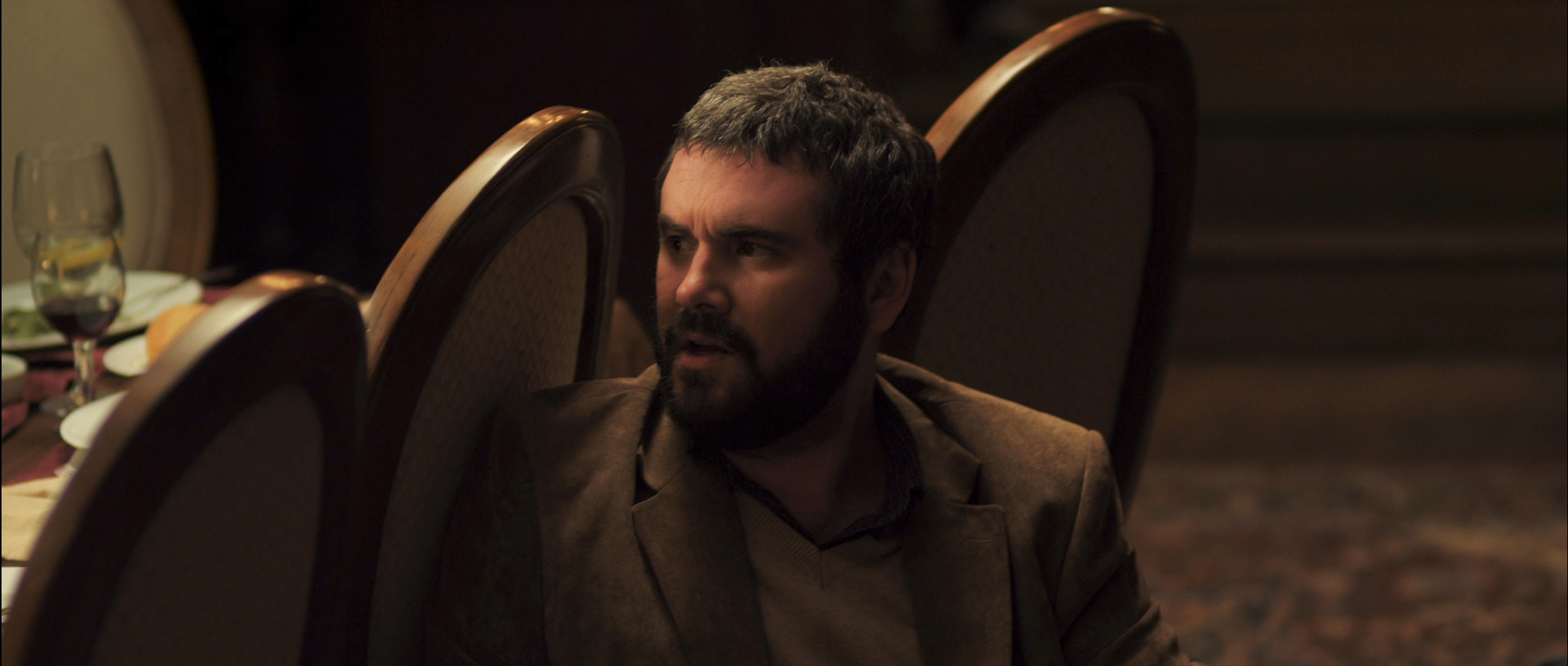
Silent House
There are very practical reasons why the edit is a fundamental unit of film grammar. For one thing, good storytelling generally favors it — few tales demand to be told in real time, without cuts and dissolves to compress the narrative. Conventional filmmaking practice makes good use of the edit by incorporating coverage, the various angles on a scene that allow the film editor some latitude to assemble and disassemble the action. And Eisensteinian montage techniques use the edit to express an idea purely through the juxtaposition of two images.
Rifts have opened between film aesthetes who disagree on the advantages of montage and mise en scène, with credible arguments being made that clever edits have less impact than carefully staged, impeccably executed master shots that invite viewers inside the frame, drinking in the complex interplay of composition, symbolism, and performance in a single moving image. Still, for most of film history, the edit has been unavoidable if for no other reason than a magazine of film negative only holds 10 minutes’ worth of footage. Hitchcock’s Rope, a stunt film that concealed its edits in order to give the impression that the whole thing was captured in a single shot, inadvertently testified to the necessity of editing.
Today, with the increasing use of digital camera systems on film sets, the 10-minute shot limitation is largely a thing of the past. But filmmakers rarely take advantage of their new freedom. Notable exceptions include Aleksandr Sokurov’s Russian Ark (2002), which was shot in a single take using a Steadicam-mounted Sony HD camera, and a 17-minute long dialogue from Steve McQueen’s Hunger (2008) that was actually shot on film using a “two-perf” widescreen format that essentially doubles the amount of footage that can be shot using traditional “four-perf” formatting.
That brings us to this film, a dark-old-house thriller that — like the Uruguayan film it remakes — ostensibly unfolds in a single take. I have no idea where that idea came from. Did the original filmmakers endeavor to make a single-take film, and then write a screenplay to match the idea? Did the one-take concept seem like a good way to tackle an existing story? Or was it simply a case of director as savvy businessman, realizing that “real fear in real time” would be a sellable tagline for an ultra-low-budget indie film?
Well, however it came into being, Silent House is the story of a young woman (Elizabeth Olsen) who returns with her father and uncle to an old family home, boarded up from disuse, which they intend to clean out before selling. Sarah hears noises from upstairs and asks Dad to investigate. Cue substantially more ominous noises, coincident with Dad’s disappearance, and Silent House is off and running.
The single-shot gimmick doesn’t make the film any more effective. Directors have been using traditional subjective camerawork to milk tension out of run-of-the-mill final-girl scenarios for ages. (Hey, aspiring genre auteurs — if it was good enough for John Carpenter and Halloween, it’s good enough for you.) If anything, I’d expect it to diminish impact by restricting the directors’ ability to choose camera angles and work the rhythm of a set piece through careful shot selection and duration.
But other stylistic choices have a more detrimental effect on this film’s ability to generate jolts and maintain tension. Silent House was shot with an inexpensive camera, the Canon 5D Mark II, that’s prized among filmmakers for its ability to generate a very shallow depth of field that keeps one plane of action in sharp focus while the background falls back to a soft blur. (Think the opposite of deep focus, where objects in the extreme foreground and background of the frame remain in focus.) As a result, when the camera moves in close on Olsen’s tortured face, the world around her becomes a backdrop of fuzzy light and shadow. This should have the effect of highlighting Sarah’s subjective experience, but the effect is so distinctive it’s distracting. I kept scanning the background, looking for motion in the blurry, weirdly grain-free shadows, rather than paying attention to the foreground.
What’s more, despite the fact that Silent House is in no way a found-footage film, it often has a found-footage look to it. That comes in part from the minimal lighting used inside the house but also from the handheld feel of many shots. In an early scene as Sarah approaches the house, the camera shakes with what feel like the footfalls of a grumpy lumberjack. When something scary or surprising happens inside the house, the picture shakes and blurs like outtakes from Cloverfield, leaving the viewer to guess at what the hell just happened as the camera follows Sarah’s mad scramble to get out of the room. And some of the scenes shot outside the house are made up of quick pans and other fast movements that reveal the camera’s technology at its worst. (Industry insiders refer to the 5D’s “rolling shutter” artifacts as “jello-cam” for good reason; those effects have been mitigated but not eliminated here, and the result is a bit stomach-turning.)
Yeah, I was disappointed by the flat, smeary look of certain parts of the film. Co-directors Chris Kentis and Laura Lau might have done themselves a big favor by shooting film, or at least a higher caliber of digital camera. Then again, Silent House looks like The Tree of Life next to the dingy videography that helped make their previous Open Water such a drag. And when you’re depicting material as distasteful as what’s eventually seen in the third act of this film, I'm not sure production values are a big plus.
SPOILER TERRITORY:
The single-shot conceit turns out eventually to be a big red herring. For one thing, the filmmakers aren’t actually shooting the whole thing in one take — that would be awfully daring. But the Canon 5D can’t actually shoot much longer than a film camera without a break and, anyway, seamlessly connecting two separate shots is, these days, a trivial special effect. If Sokurov and his cast’s navigation of 90 unbroken minutes of Russian Ark felt a little like a highwire act, then Silent House feels like a Jackie Chan film with digital doubles doing all the stunts.
And for another thing, the promise of a one-take horror film is immediacy. Even if the idea that a film with no edits feels more “real” is kind of dumb, the selling point of this gimmick has something to do with a perceived lack of trickery, as if a film with no apparent cuts is somehow more punk-rock than a properly edited film. And Silent House blows that expectation all to hell with an eleventh-hour reveal that embraces the nature of the subjective camera — here, the film itself is an unreliable narrator. The idea has a bit of juice as far as theory goes, but it’s not especially well executed. The eventual reveal is telegraphed through the kind of klutzy exposition that makes you wonder whether it’s actually meant to be foreshadowing or it’s just a colossal failure of tonal control. In an early scene, Sarah’s uncle shines his lantern on her body and makes a vaguely but pointedly inappropriate comment about how grown up she is. Her father scrambles to hide some Polaroids that have been spread out on a bed as Sarah stands by, apparently oblivious. Later, Sarah complains of the “holes” in her head to an old, unremembered friend who stops by for a visit and remarks, too cryptically, “how could you forget me?”
I’ll admit that I spent quite a bit of time in my seat trying to figure out where all this was going, but that was only because the implied sex-abuse, incest, and rape-revenge motifs seemed too, well, tawdry. (The shot of a little girl crying in a bathtub full of beer bottles and bloody water is just unspeakably sad; it’s too much horror for this movie to deal with.) I’ve never had a problem with rape-revenge as an exploitation tactic, but those films work by delivering catharsis and visceral thrills. Their protagonists are purposeful and larger than life, not like the hallucinating, self-deluding child-woman we see on screen for most of Silent House. I think her transformation, for a moment, into a vicious, righteously angry killer, is supposed to resonate with viewers, but it’s too late — once the rug has been pulled and her status changes from damsel-in-distress to victim-aggressor, the audience’s investment in her purported predicament goes away and the movie’s essentially over.
Despite playing a role that requires her to spend an inordinate amount of her screen time sobbing, shrieking, or putting on a game face as the camera peers down her shirt, Olsen comes out ahead. There’s a convincing scene fairly early on where she hides under a table, choking back screams and sobs as she works her mouth in close-up that testifies to her skill in front of the camera. She’s something close to spectacular here — the main reason the movie works as well as it does before it stumbles into repetition and improbability. Olsen is awesome, but the proximity of this release to Martha Marcy May Marlene makes me root for her to move away, for now, from queasy-making films about the failed recovery of heavily damaged characters.
Posted by on March 10, 2024 8:40 PM

